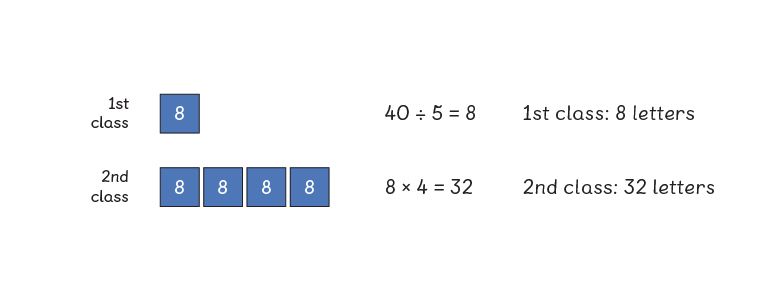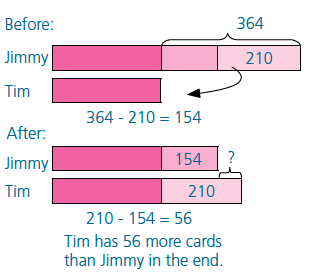Exploring Bar Model Illustration Techniques: A Comprehensive Overview to Picturing Mathematics Concepts
Bar design drawing methods serve as a beneficial resource for both educators and pupils in envisioning mathematical ideas. These models simplify intricate numerical relationships, helping in the understanding of addition, subtraction, reproduction, and department. This guide lays out effective strategies for applying bar models, promoting energetic involvement and real-world links. As viewers discover the practical applications and teaching suggestions, they will discover just how these strategies can change their approach to mathematics.
Recognizing the Essentials of Bar Version Illustration
Bar model attracting serves as a powerful aesthetic device in mathematics, assisting in the understanding of analytic strategies and numerical connections. This method includes representing numbers and their connections through rectangular bars, making it simpler to imagine operations such as addition, department, multiplication, and subtraction. Each bar's length represents a specific worth, permitting learners to compare amounts and recognize percentages clearly.
To create a bar version, one starts by determining the issue's essential elements, typically simplifying into parts that can be aesthetically stood for. In a basic addition trouble, two bars can be attracted, with their lengths standing for the addends. The combined size shows the sum. Furthermore, bar models can be adapted for more intricate problems, including proportions and fractions, by readjusting the bars appropriately. Mastering these fundamentals lays a solid foundation for reliable analytical and much deeper mathematical comprehension.
Advantages of Using Bar Designs in Mathematics
Using bar models in maths supplies various advantages that enhance knowing and understanding. These graphes help students in comprehending complex ideas by damaging them down right into manageable parts. Bar designs supply a clear structure for illustrating partnerships in between numbers, making abstract concepts a lot more concrete. They advertise a deeper understanding of mathematical operations and assist in analytic by allowing learners to picture the information they are collaborating with.
Bar versions sustain the growth of critical thinking skills, as students must evaluate and translate the aesthetic details to attract verdicts. This approach urges energetic interaction with the product, strengthening retention and mastery of mathematical principles. By fostering a strong structure in aesthetic proficiency, bar designs empower learners to come close to numerous mathematical difficulties with confidence. In general, the integration of bar versions right into mathematics education proves advantageous in cultivating both understanding and logical capabilities among students.
Using Bar Designs to Addition and Reduction
Bar versions function as an effective tool for aesthetically standing for addition and reduction troubles. By highlighting the partnership between numbers, they enhance understanding and promote analytical. On top of that, real-life applications of these versions can help students comprehend mathematical concepts in sensible contexts.
Representing Enhancement Visually
When trainees experience enhancement and subtraction issues, visual help can significantly enhance their understanding of these operations. Bar models work as reliable tools for standing for enhancement. By dividing a rectangular shape into sections that represent the numbers included, students can imagine the partnership between the amounts. If a pupil needs to add 3 and 5, they can produce a bar separated into two sections: one area standing for 3 and the various other representing 5. This clear representation not just simplifies the enhancement procedure however also strengthens the principle of combining quantities. As trainees control these aesthetic help, they create a deeper comprehension of addition, bring about enhanced problem-solving abilities and greater self-confidence in their mathematical capacities.
Reduction With Bar Models
Although subtraction is commonly regarded as an extra intricate procedure than enhancement, bar versions can properly clarify this process for students. By visually representing the quantities included, trainees can much better understand how numbers relate to each other. In a bar model for subtraction, one bar stands for the total amount, while an additional shows the amount being deducted. This visual distinction helps pupils realize the principle of "removing." If a bar shows 10 devices, and another bar representing 4 systems is gotten rid of, pupils can conveniently see that 6 systems stay. This strategy not just cultivates understanding of subtraction but likewise aids in creating analytic abilities, enabling pupils to envision their mathematical reasoning and boost their general understanding of mathematical principles.
Real-Life Application Examples
Recognizing reduction through bar versions lays a foundation for using these techniques in real-life circumstances. In different contexts, such as budgeting or purchasing, individuals can envision just how much cash stays after expenditures. If a person has $50 and spends $20, a bar version can represent the complete amount and the invested section, showing that $30 is left. In addition, parents can make use of bar models to assist youngsters understand just how many more things require to be contributed to finish a set, such as having 3 apples and needing five. This graph simplifies complicated problems, promoting comprehension and retention. Eventually, bar versions work as effective tools in day-to-day decision-making, boosting mathematical understanding in useful circumstances.
Visualizing Multiplication and Division With Bar Designs
In discovering the application of bar models for multiplication and division, it is necessary to grasp their foundational ideas. Building reproduction versions permits students to visualize connections in between numbers, while reliable department techniques can be illustrated via these aesthetic aids. This method improves comprehension and analytical skills in mathematics.
Comprehending Bar Models
Bar models function as a powerful visual tool for highlighting the concepts of multiplication and division. They allow students to represent mathematical connections in a structured style, helping with a much deeper understanding of these operations. In multiplication, bar models display groups of equal size, allowing people to visualize the overall amount when integrating these teams. Alternatively, in department, bar versions help depict just how a total amount is split right into smaller sized, equal parts, making clear the idea of partitioning. By employing these aesthetic aids, students can realize the underlying concepts of multiplication and department better. This strategy not only enhances understanding yet likewise supports analytic skills, making bar models an important asset in mathematical education and learning.
Building Reproduction Designs
Constructing reproduction models making use of bar representations provides a clear method for visualizing the procedure of multiplication. These models make it possible for learners to stand for multiplication as teams of equivalent parts, making abstract principles a lot more concrete. As an example, to highlight (3 times 4), a student can attract one bar divided right into three equal sectors, each representing 4 units. In addition, producing a 2nd bar with the exact same size strengthens the understanding of repeated enhancement, as each sector represents one team. This aesthetic depiction not just aids in realizing reproduction but additionally improves analytic skills. By employing bar models, pupils can better understand relationships between numbers and establish a robust structure for extra complex mathematical principles, resulting in boosted self-confidence in their abilities.
Picturing Department Strategies

Solving Word Issues Utilizing Bar Version Techniques

As an example, in a trouble including enhancement and subtraction, students can draw separate bars for every quantity and after that manipulate them to locate the solution. This procedure not just clears up the issue however also fosters a deeper conceptual understanding. In addition, bar models can be adjusted for different kinds of word issues, making them versatile throughout different mathematical subjects. Eventually, making use of bar models can greatly improve students' analytical abilities by giving a clear aesthetic pathway to reach the correct solution.
Integrating Bar Models in Various Math Topics
Bar designs can be flawlessly incorporated into various mathematics subjects, boosting pupils' understanding of principles beyond basic math. In algebra, these visual tools help in standing for inequalities and equations, making it possible for students to envision connections between variables. When tackling geometry, bar models can highlight the residential properties of shapes and spatial thinking, helping trainees comprehend concepts like location and boundary efficiently. In data, bar models facilitate the interpretation of information sets, enabling pupils to contrast quantities and recognize patterns visually. Furthermore, incorporating bar designs within measurement topics help in recognizing systems and conversions by giving a tangible representation of quantities. By employing bar models across different mathematical locations, educators can cultivate a deeper comprehension of intricate principles, thus enhancing problem-solving abilities and advertising critical thinking (bar model drawing techniques). This versatility demonstrates the energy of bar versions as a foundational device for students in their mathematical journey
Tips for Training Bar Designs Efficiently
Incorporating bar models into teaching methods calls for thoughtful techniques to optimize their efficiency. Educators needs to begin by introducing bar models with basic, relatable instances that students can quickly comprehend. This helps to build self-confidence and familiarity with the principle. Gradually enhancing the complexity of problems allows learners to use their abilities considerably. Furthermore, teachers need to urge pupils to develop their very own bar designs, advertising active involvement and ownership of their knowing.
Integrating joint tasks can additionally improve understanding, as students go over and resolve troubles in groups. Continual feedback is essential; educators ought to provide useful discourse on students' bar design representations to assist improvement. Connecting bar models to real-life circumstances strengthens their significance, aiding pupils see the useful applications of their mathematical skills. By executing these strategies, teachers can properly harness the power of bar versions in their maths guideline.
Regularly Asked Inquiries
Can Bar Versions Be Used in Other Topics Besides Math?
Bar models can certainly be made use of in different topics past math. They successfully show ideas in science, social studies, and language arts, aiding to visually stand for connections, procedures, and concepts for enhanced understanding across disciplines.
What Age Team Is Ideal Suited for Learning Bar Designs?
Bar models are best fit for youngsters ages 7 to 12, as they create concrete thinking abilities during this period (bar model drawing techniques). At this age, students can successfully grasp abstract principles through graph and analytical strategies
Are There Digital Equipment for Creating Bar Versions?

Exactly How Can I Examine Pupil Recognizing of Bar Designs?
Examining pupil understanding of bar models can entail quizzes, empirical analyses, and team discussions. Educators could also assess students' completed designs and their capacity to clarify their reasoning, making certain a thorough evaluation of comprehension.
What Prevail Errors When Utilizing Bar Designs?
Usual errors when making use of bar versions include misrepresenting quantities, failing to properly label bars, perplexing addition and subtraction, disregarding to make use of regular ranges, and ignoring the value of clear aesthetic separation in between various aspects.
In enhancement, bar models can be adapted for more info much more complicated problems, including ratios and fractions, by adjusting the bars accordingly. Subtraction is typically regarded as an extra intricate operation than addition, bar models can successfully clarify this procedure for trainees. In a bar design for subtraction, one bar represents the overall, while another indicates the amount being deducted. If a bar shows 10 units, and one more bar standing for 4 systems is gotten rid of, students can easily see that 6 systems stay. When splitting a total amount into equal teams, trainees can attract a lengthy bar to stand for the whole and after that sector it right into smaller bars that suggest each group.